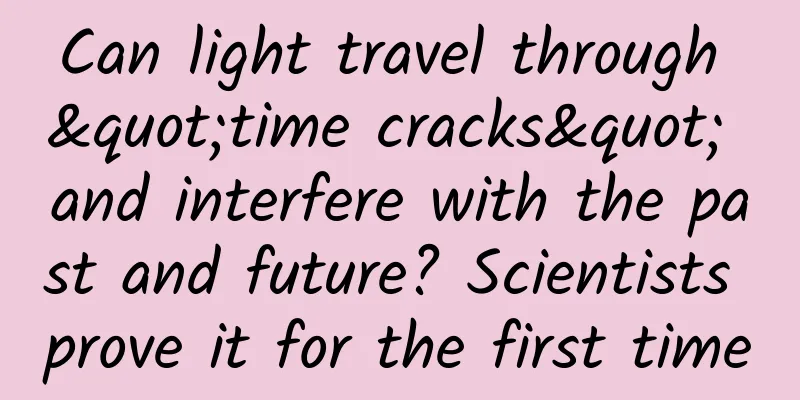Can light travel through "time cracks" and interfere with the past and future? Scientists prove it for the first time

|
Science Fiction Network, April 13th. Scientists have demonstrated for the first time that they can transmit light through a "time crack" in time. The new experiment builds on a demonstration from more than 200 years ago in which light passing through two slits in a screen produced a unique diffraction pattern in space in which the peaks and troughs of the light waves added or canceled out. In the new experiment, the researchers created a similar pattern in time, essentially changing the color of ultrashort laser pulses. The discovery paves the way for the development of analog computers that process data imprinted on light beams rather than digital bits—it might even enable such computers to learn from data. It also deepens our understanding of the fundamental properties of light and its interactions with matter. In the new study, the researchers used indium tin oxide (ITO), a material found in most cell phone screens. Scientists already knew that ITO can react to light by changing from transparent to reflective, but the researchers found that it happens much faster than previously thought, in less than 10 femtoseconds. The researchers figured out why the reaction happens so quickly by carefully examining the theory of how electrons in ITO respond to incident light. The wave-like nature of light was first demonstrated by British scientist Thomas in 1801 through the classic "double-slit" experiment. When light is shone on a screen with two slits, the direction of the waves changes so that the waves emanating from one slit overlap with the waves coming in from the other slit. The peaks and troughs of these waves either add up or cancel out, forming bright and dark stripes called interference patterns. In the new study, the researchers recreated such interference patterns in time by shining a "pump" laser pulse on a screen coated with ITO. Although the ITO is initially transparent, the light from the laser changes the properties of the electrons within the material so that the ITO reflects light like a mirror. A subsequent probe laser beam hitting the ITO screen sees this temporary change in optical properties, only a few hundred femtoseconds long in time. Using a second pump laser pulse makes the material behave as if it has two slits in time, just as light passes through the double slits in space. While light changes direction and fans out when it passes through a traditional slit in space, when it passes through these dual "slits in time" its frequency changes, and frequency is inversely proportional to wavelength. The wavelength of visible light determines its color. This isn't the first time scientists have figured out how to manipulate light across time rather than space. For example, Google scientists said their quantum computer created a time crystal, a new phase of matter that changes periodically over time, rather than atoms being arranged in a periodic pattern in space. Researchers hope to exploit these phenomena to create metamaterials, or structures that alter the path of light in specific and often complex ways. |
>>: These three stone carvings were discovered, which are very rare →
Recommend
How to make a good online event promotion plan?
In marketing psychology, herd mentality, greed fo...
An article to understand the communication between Android and Flutter
As a cross-platform solution, Flutter is often em...
Floods in Wanzhou, Chongqing have caused 15 deaths and 4 missing! Please take precautions!
According to the Emergency Management Bureau of W...
It only costs $50 to crack an iPhone!
In the past, the Israeli company Cellebrite could...
A wonderful fantasy journey "Legend of the Reaper Swordsman" TV version experience
Screen: operate: Sound Effects: Plot: Experience:...
How to make money with Kuaishou film and television account, how to make money using Kuaishou?
Kuaishou is one of the most popular short video p...
Google's Android beta device search feature exposed: supports network and car search platforms
Google said it is preparing to upgrade the "...
International Maritime Day丨How to sail steadily when encountering strong winds and waves? Experts say→
The "strong winds and waves" mentioned ...
21 questions and answers about Android View event mechanism
[[178693]] 1.What are the main coordinate paramet...
Is there any scientific reason behind the saying “Drinking water in big gulps is the same as not drinking it at all”?
Have you ever heard of the view that "drinki...
With sales plummeting, has Xiaomi’s Internet model come to an end?
In the smartphone industry or the Internet techno...
Ronglian Cloud Communications Tips: How to Lower the Threshold for Acquiring Real Users
Nowadays, many Internet companies are acquiring u...
Tik Tok live broadcast layout and strategy!
Recently, it has been found that many brands are ...
Summary of 7 commonly used sorting algorithms in Java
I have been free for a while, so I took some time...









